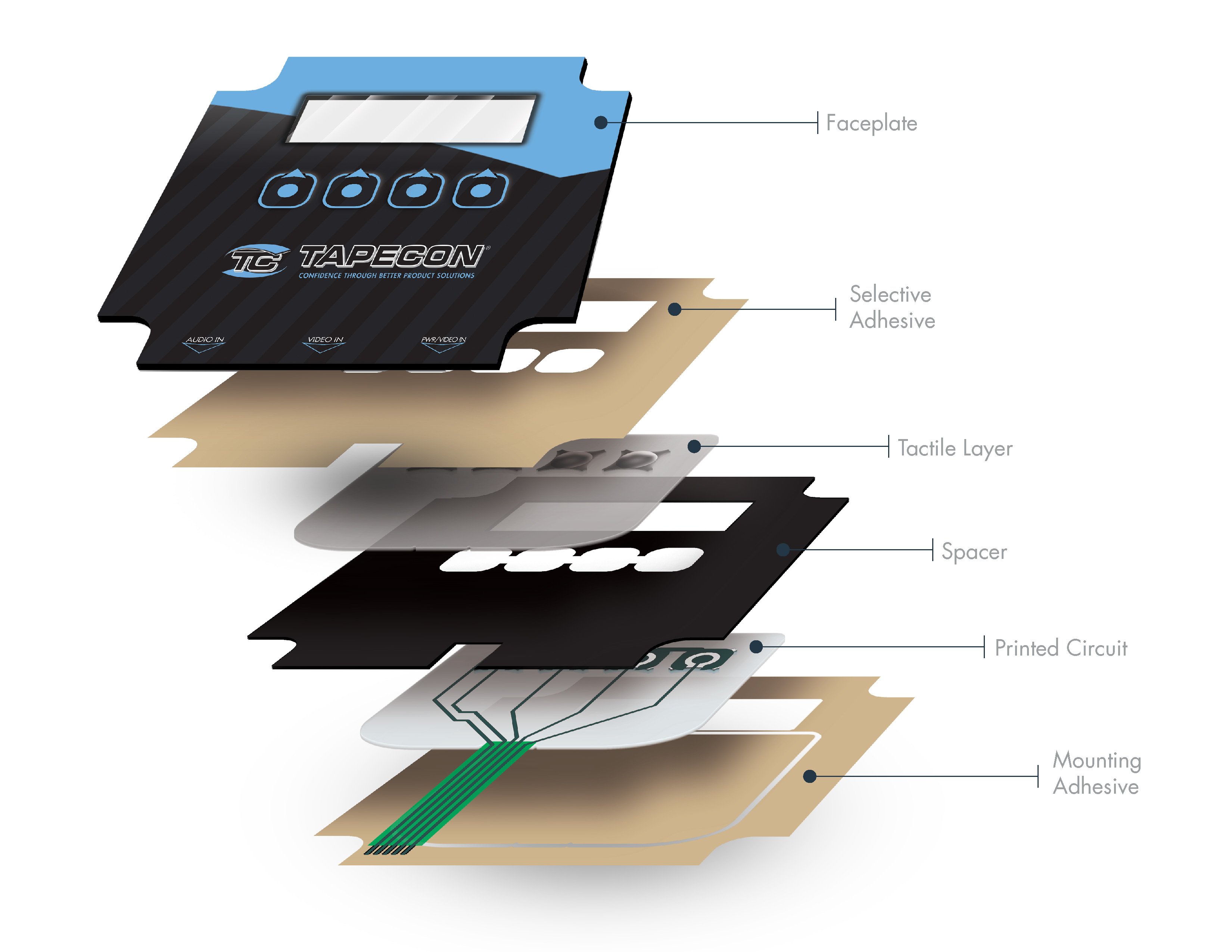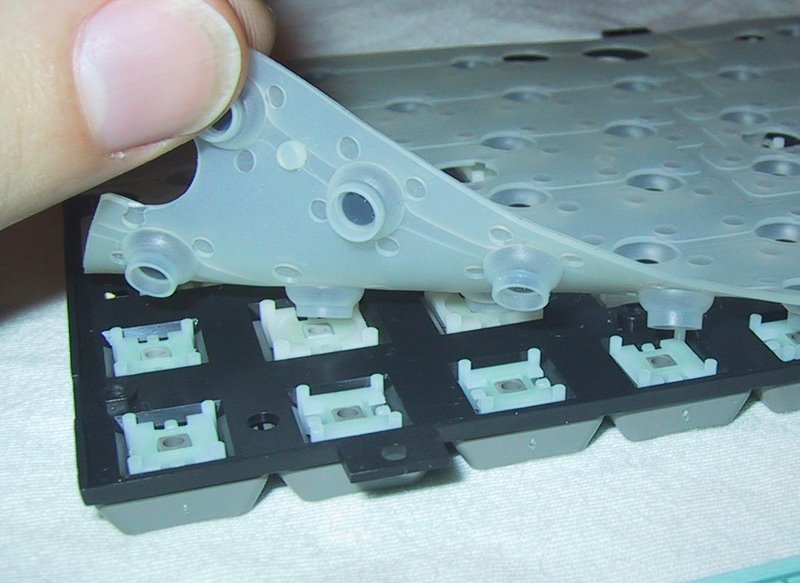Why Picking the Right Membrane Switch Is Vital for Your Product Design
Why Picking the Right Membrane Switch Is Vital for Your Product Design
Blog Article
How Membrane Layer Switches Over Add To the Durability of Electronic Control Panels
Membrane layer switches play an important duty in improving the durability of digital control panels, largely with their multi-layered building which offers reliable protection versus ecological variables such as wetness and dust. The lack of relocating parts substantially minimizes the likelihood of mechanical failures, making membrane switches suitable for demanding applications.
Interpretation of Membrane Buttons

Membrane buttons are made to be slim and light-weight, making them appropriate for applications where area is restricted. They can be manufactured in different shapes, dimensions, and colors, offering flexibility in style that fulfills aesthetic and practical demands. In addition, membrane switches can include numerous modern technologies, such as tactile feedback and LED signs, enhancing individual experience.
Due to their building and construction, membrane buttons are typically immune to dust, wetness, and basic wear, adding to their durability popular atmospheres. Their seamless design not only promotes very easy cleaning yet likewise reduces the risk of mechanical failure, making them a preferred option for suppliers seeking reliable interface in their electronic control panels.
Protection Against Ecological Elements
The layout of membrane layer changes inherently provides a degree of security versus different environmental factors, which is vital for maintaining capability in tough conditions - Membrane Switch. These switches are usually built with layers of adaptable materials that secure interior elements from wetness, dust, and contaminants. By enveloping the circuitry, membrane layer switches over lessen the threat of brief circuits and deterioration, which can dramatically impair efficiency
In addition, making use of robust adhesives and sealants during manufacturing boosts their resistance to ecological obstacles. Membrane layer switches can withstand exposure to chemicals and solvents, making them suitable for sectors such as food processing and healthcare, where hygiene and sanitation are paramount. Their smooth surface area design likewise protects against the build-up of dust and germs, promoting simpler cleaning and maintenance.
Temperature changes are one more environmental concern, and membrane buttons are crafted to function efficiently throughout a large range of temperatures (Membrane Switch). This versatility makes certain that control panels stay operational in various setups, from commercial atmospheres to customer electronic devices
Effect On Individual Communication
Individual communication with electronic control board is dramatically influenced by the style and capability of membrane buttons. These buttons give a responsive user interface that improves the overall individual experience, enabling instinctive navigation and control. Their responsive nature makes sure that individuals get immediate feedback upon activation, which is vital for jobs needing accuracy and effectiveness.
In addition, the smooth surface area of membrane switches over helps with simple cleaning and maintenance, advertising customer confidence in the dependability of the interface. This tidiness is particularly important in atmospheres where hygiene is vital, such as clinical or food handling settings. Furthermore, the small and light-weight design of membrane layer changes adds to the aesthetic appeal of control board, motivating user interaction via a modern-day and smooth look.
In addition, the assimilation of visual components, such as published symbols and backlighting, aids users quickly determine features, lowering the finding out contour related to brand-new equipment. Therefore, individuals can operate tools better, leading to raised productivity and complete satisfaction. In recap, membrane layer buttons play a critical role in enhancing customer communication by combining official website functionality, aesthetics, and ease of usage, eventually causing improved functional efficiency.
Design Adaptability and Personalization
Design adaptability and modification are important facets of membrane switches, allowing suppliers to tailor digital control panels to certain applications and individual requirements. This flexibility permits the integration of different style elements, such as shades, graphics, and structures, which can enhance the aesthetic appeal and customer interaction of the control panel.
Membrane buttons can be tailored in shapes and size, accommodating a vast array of gadgets and applications, from commercial machinery to consumer electronics. This versatility ensures that manufacturers can create intuitive interfaces that line up with individual assumptions and operational demands. Additionally, the ability to incorporate special features such as backlighting or responsive responses better improves usability, enabling an extra interactive experience.
Moreover, the production procedure for membrane layer switches over sustains the quick prototyping of styles, making it possible for manufacturers to repeat and improve their ideas swiftly. This ability not just accelerates the development timeline but additionally guarantees that the final item meets specific useful and aesthetic requirements.

Cost-Effectiveness and Longevity
Cost-effectiveness and durability are substantial benefits of membrane buttons, making them an appealing alternative for suppliers and end-users alike. These switches are usually cheaper to generate than standard mechanical buttons, mainly because of their simplified manufacturing procedures and the decreased variety of parts required. This cost advantage expands not just to first production but also to long-lasting operational expenses, as membrane switches frequently need less upkeep and have a reduced failure price.
In addition, the long life of membrane switches adds to their overall worth. Built from durable products, they are immune to ecological variables such as wetness, dust, and chemicals, which can result in premature wear in various other button kinds. The lack of relocating components minimizes mechanical failure, allowing membrane switches to preserve capability over expanded periods.
This sturdiness is particularly beneficial in applications calling for regular efficiency under requiring problems, such as clinical tools and industrial tools. Eventually, the combination of cost-effectiveness and longevity makes membrane switches why not try here over a financially practical choice for suppliers, providing dependable solutions that endure the test of time while maximizing monetary factors to consider.
Verdict
In final thought, membrane layer switches significantly boost the resilience of digital control panels via their durable building and construction and protective features. By effectively protecting wiring from ecological hazards and decreasing the threat of home mechanical failure, these buttons make certain regular performance sought after applications. The seamless layout promotes hygiene and convenience of upkeep, while personalization alternatives enable customized remedies for various requirements. On the whole, membrane changes stand for a dependable and economical option for boosting the longevity and functionality of digital control systems.
Report this page